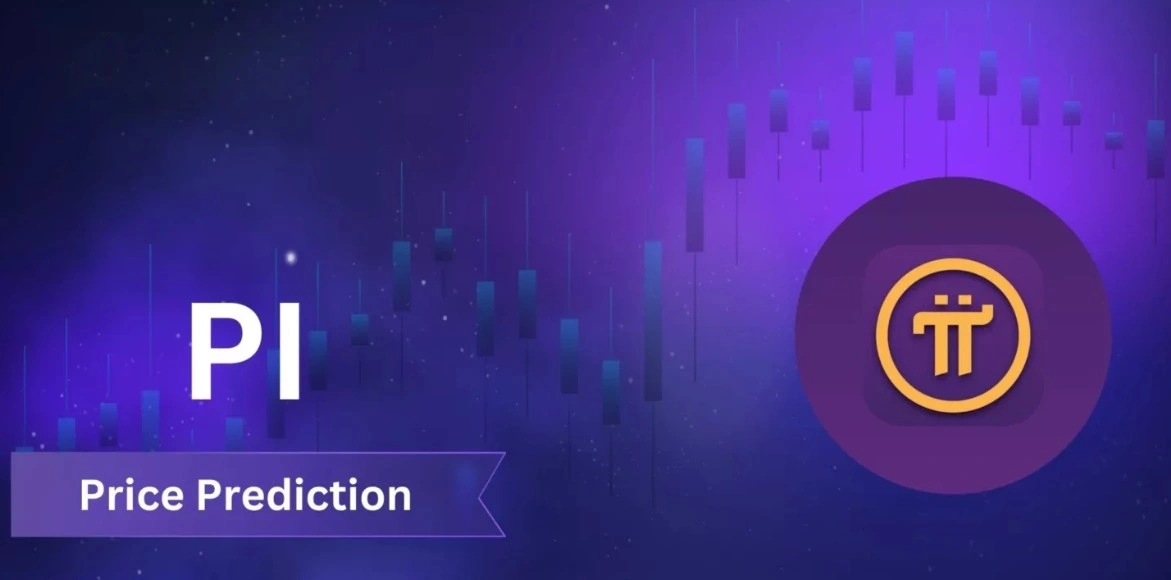Pi Network in 2025 – Hope or Hype?
As 2025 unfolds, Pi Network (PI) sits at a critical crossroads. After reaching highs above $3 in early February, the token has slumped nearly 73%, weighed down by delayed mainnet migration, token unlocks, and KYC issues. Despite these roadblocks, a determined community continues to push narratives like the “$314K GCV (Global Consensus Value)“, fueling both hope and skepticism across the crypto landscape.
With over 276 million PI tokens set to unlock in June 2025—equivalent to $176M in notional value—market observers are asking: Can Pi absorb the incoming supply pressure with real-world utility, exchange listings, and ecosystem growth? Or will technical breakdowns and disillusioned users send PI spiraling toward new lows?
Let’s break it all down.
Key Catalysts That Could Affect Pi Network’s Price
1. Migration Progress & Tokenomics Concerns
Mainnet Migration Bottlenecks
Over 12 million users have reportedly migrated to Pi Mainnet. However, referral bonuses, KYC clearance delays, and confusing migration phases have undermined user trust. Reports of disappearing balances, repeated KYC attempts, and app glitches have become frequent complaints.
Takeaway: As more tokens unlock during periodic migrations, selling pressure increases. If migration infrastructure isn’t fixed, confidence could erode rapidly.
Token Supply vs. Demand Imbalance
Out of the 100 billion PI max supply, 65% is allocated to mining rewards. As migration accelerates, so does the circulating supply—currently around 7.3 billion tokens (7.3%). This rising supply, without a corresponding surge in demand, risks severe dilution.
Unless real utility (apps, payments, barter, or exchange trading) absorbs this growing supply, PI’s price is vulnerable to inflationary pressures.
2. Market & Competitive Landscape
Altcoin Competition
Pi’s unique mobile-mining approach faces stiff competition from established tokens like:
- Ethereum (ETH) – Smart contract king with deep liquidity
- Ripple (XRP) – Utility-focused with institutional adoption
- Toncoin (TON) – Messaging integration via Telegram
Challenge: Without meaningful integration, liquidity, or dApps, Pi risks remaining a “walled garden” cryptocurrency with limited real-world usage.
3. Technical Analysis: Bearish Signals Dominate
At the time of writing, PI trades at $0.652, below the 50-day simple moving average (SMA) of $0.714. It has formed a descending wedge and a bearish inverse cup-and-handle pattern—both classic bearish setups.
- MACD: Weak, trending downward
- RSI: 41, near oversold territory
- Key Support Levels:
- $0.64 (short-term bottom)
- $0.55 (critical support – a break could lead to $0.40)
Analyst View: A drop below $0.55 may trigger panic selling and push PI toward its April lows.
4. Macro Trends & Regulatory Headwinds
While crypto market sentiment remains neutral (Fear & Greed Index: 57/100), Bitcoin dominance at 63.1% leaves little room for altcoin rallies.
- Macroeconomic Uncertainty: Regulatory developments, global interest rate changes, and geopolitical risks (e.g., China–US tensions) weigh on speculative altcoins like PI.
- Liquidity Risk: With no centralized exchange listings, PI relies on internal transfers and barter—a fragile ecosystem vulnerable to sentiment swings.
5. Community Sentiment: Between Faith and Frustration
GCV Narrative: $314,159 per PI?
A vocal minority continues to champion the “Global Consensus Value” (GCV)—a community-driven belief that 1 PI should be worth $314,159, based on Pi Day and symbolic value. Events, conferences, and social campaigns continue to spread this idea despite:
- No official support from the Core Team
- No blockchain confirmation of GCV
- $72 trillion implied market cap (7x global GDP)
Warning: This narrative may risk community disillusionment if expectations remain unfulfilled.
On-Chain Activity & Turnover
With turnover at just 1.45%, most users are holding, not transacting. Low liquidity and minimal active use make PI’s price prone to sudden shocks from whales or migration releases.
What Could Turn Things Around for PI?
Despite the bearish backdrop, PI still holds long-term potential—if key milestones are achieved:
✅ Major Exchange Listings
Listings on centralized exchanges like Binance or KuCoin would introduce price discovery, liquidity, and trading utility.
✅ KYC & Migration Fixes
Solving KYC issues, ensuring smooth periodic migrations, and restoring user trust could stabilize user sentiment.
✅ Ecosystem Expansion
App integrations, real business use cases (e.g., Pi payment plugins, games, marketplaces), and open APIs could create real demand for the token.
Pi Price Prediction 2025 – Scenarios
| Scenario | Assumptions | Price Range |
|---|---|---|
| Bearish | Migration chaos, token flood, no listings | $0.25–$0.40 |
| Neutral | Gradual migration, limited utility, internal growth | $0.65–$0.80 |
| Bullish | Exchange listings, strong app adoption | $1.50–$2.00 |
What Are People Saying About Pi Network in 2025?
Bearish Voices:
- Joe Swanson, Analyst: “Break below $0.55 risks drop to April’s $0.40 low.”
- Dr. Altcoin: “GCV distracts from real issues—92B tokens controlled by the Foundation.”
Bullish Voices:
- Community Forums: Rumors of “Phase 2 migration” and Wyckoff accumulation patterns fuel hope.
- GCV Supporters: Promote barter marketplaces valuing PI at $100–$314,159, despite market constraints.
Frequently Asked Questions (FAQs)
1. What is Pi Network’s current price?
As of June 2025, Pi Network (PI) trades around $0.65, with limited liquidity and no major exchange listings.
2. Why is the Pi token price falling?
PI is under pressure from token unlocks, delayed mainnet migration, and lack of utility or liquidity.
3. What is the $314,159 GCV theory?
It’s a community-driven idea claiming PI should be worth $314,159 based on symbolic value. It has no basis in market reality or blockchain validation.
4. Is Pi Network listed on any crypto exchanges?
As of now, no major CEX listings exist. Pi is mostly used in internal transfers or barter-based apps within its ecosystem.
5. Will Pi price increase in 2025?
Only if the Core Team accelerates migration, fixes KYC, and launches exchange listings or ecosystem apps. Otherwise, token unlocks may keep prices under pressure.
6. What is the circulating supply of PI?
Approximately 7.3 billion tokens, with up to 276 million more unlocking in June 2025 alone.
7. Is Pi Network a scam or legit?
The project is not a scam, but it’s highly speculative and remains in a testnet-like phase, with limited utility or transparency.
Final Thoughts: Is Pi Network a Good Investment in 2025?
Pi Network is one of the most ambitious and controversial crypto experiments—blending grassroots adoption with heavy token inflation. While the community-driven approach is admirable, migration delays, lack of utility, and token unlocks create serious headwinds.
If the Core Team can launch meaningful apps and list on exchanges before Q3 2025, PI could reclaim investor confidence. But without action, Pi risks becoming another altcoin that never breaks out of its testnet phase.
Disclaimer
This article is for informational and educational purposes only and does not constitute financial advice. Cryptocurrency investments are highly volatile and carry risks. Always do your own research (DYOR) and consult a financial advisor before making investment decisions.



